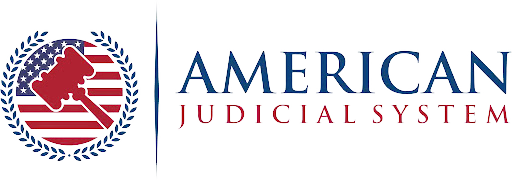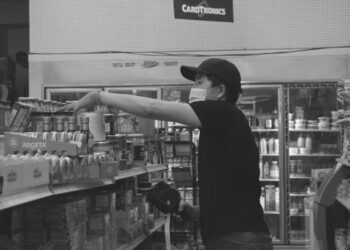New York Labor Law § 240—commonly known as the “Scaffold Law”—is one of the most unique and far-reaching labor protections in the country. Enacted in the late 19th century and still hotly debated today, this statute imposes strict liability on property owners and contractors for gravity-related injuries suffered by construction workers. Whether you’re a laborer working several stories above the ground, a developer managing a site, or a construction accident lawyer navigating claims, understanding the implications of § 240 is essential. In this article, we’ll break down what the law says, who it protects, how it’s applied, and what it means for safety and liability on New York’s worksites.
Decoding New York Labor Law § 240: Origins, Purpose, and Key Language
New York Labor Law § 240 was enacted in 1885 as a response to the growing dangers faced by workers during the city’s rapid vertical expansion. With skyscrapers and other tall structures transforming the skyline, lawmakers recognized the serious—and often fatal—risks associated with working at heights. The statute’s purpose was, and remains, to ensure that workers have adequate fall protection when working on elevated surfaces, such as scaffolds, ladders, hoists, and other height-related equipment.
At its core, § 240 mandates that “contractors and owners and their agents” must provide “proper protection” to workers involved in activities like erection, demolition, repairing, altering, painting, cleaning, or pointing of a building or structure. The law is focused specifically on injuries that result from elevation differentials—either a worker falling from a height or being struck by a falling object due to inadequate safety precautions.
What makes § 240 stand out from other workplace safety laws is the concept of absolute liability. Unlike negligence-based claims, workers injured in elevation-related accidents do not need to prove that an owner or contractor was careless. Instead, they only need to demonstrate that the law was violated and that the violation led to their injury. This strict standard has made § 240 both a powerful tool for injured workers and a controversial topic for insurers, employers, and lawmakers alike.
The statute’s broad and somewhat archaic language continues to be interpreted by courts, which have played a major role in defining its modern-day application. As a result, understanding § 240 requires not just a reading of the statute itself, but also familiarity with decades of case law that has refined its scope.
Who’s Covered? Workers, Contractors, and Property Owners Under the Scaffold Law
New York Labor Law § 240 draws clear lines around who is protected by the law and who may be held liable. Here’s how the statute applies:
Who Is Protected (Eligible Workers)
- Covered roles:
- Laborers
- Carpenters
- Electricians
- Painters
- Ironworkers
- Other tradespeople working at elevation
- Covered activities:
- Erection of structures
- Demolition
- Repair or alteration
- Painting or cleaning
- Pointing of a building or structure
- Key criteria:
- The activity must involve a height-related risk (e.g., working on scaffolds or ladders).
- Routine maintenance and inspection work are generally not
- Protection is based on the task being performed, not the worker’s job title.
Who Is Liable (Parties Responsible for Safety)
- Typically liable parties:
- Property owners (except certain homeowners)
- General contractors
- Agents of owners or contractors
- Important exceptions:
- Single-family homeowners are exempt unless they direct or control the work.
- Subcontractors may also be sued, but they are not typically the “statutorily liable” party unless they fall under the category of an “agent.”
- Liability characteristics:
- Liability is absolute—injured workers do not need to prove negligence.
- Responsibility for providing safety equipment cannot be delegated away.
- Comparative fault (e.g., worker error) is not a valid defense in most cases.
By clearly defining protected roles and assigning non-delegable liability, § 240 places a strong legal incentive on contractors and property owners to maintain strict safety standards when elevation-related work is being performed.
Typical Elevation-Related Accidents and How § 240 Assigns Liability
At the heart of New York Labor Law § 240 are accidents that involve elevation differentials—either a worker falling from a height or an object falling and striking a worker below. The law is designed to address precisely these scenarios, where gravity plays a central role in causing injury.
Common Elevation-Related Accidents
- Falls from scaffolds, ladders, or roofs
These are among the most frequent incidents. If a scaffold collapses, a ladder shifts, or a worker falls from an unprotected roof edge, § 240 is often invoked. - Falling objects striking workers
Tools, materials, or debris that are not properly secured and fall onto workers below can trigger § 240 liability—especially if proper hoisting or securing devices weren’t used. - Collapsed structures or supports
When temporary supports, such as formwork or braces, give way and cause a worker to fall, the law typically applies. - Failure of personal fall protection
If a harness, lanyard, or anchor point fails—or isn’t provided at all—the employer or site operator can be held strictly liable under the statute.
How Liability Is Assigned
- Absolute liability standard
If a worker is injured in one of these gravity-related accidents and the injury was the result of inadequate safety equipment, the owner or contractor is automatically liable—regardless of whether they were directly at fault. - No need to prove negligence
Unlike in typical personal injury claims, the injured worker doesn’t have to show that the employer or site manager acted carelessly. The mere absence of required safety measures, if it leads to injury, is enough. - Comparative fault is generally not a defense
Even if the worker contributed to their own injury—by misusing equipment, for example—the owner or contractor can still be held fully responsible. Courts have consistently limited comparative negligence as a defense in § 240 cases.
These elements make § 240 a uniquely powerful statute for injured workers. It also imposes a high burden on those managing job sites to proactively ensure that proper elevation safety systems are in place and used correctly—because the legal consequences for failing to do so can be swift and substantial.
Absolute Liability in Practice: Defenses, Exceptions, and Recent Court Trends
One of the defining—and most debated—features of New York Labor Law § 240 is its absolute liability standard. Unlike negligence-based laws, this statute does not weigh the relative fault of the parties in most cases. If the law applies and the safety violation caused the injury, the owner or contractor is liable—period. However, in practice, there are some important nuances.
Are There Any Defenses?
- The “Recalcitrant Worker” Defense
This is one of the few recognized exceptions. If a worker was explicitly instructed to use safety equipment and unreasonably refused to do so, courts may limit or deny recovery. However, this defense is applied narrowly and must be supported by clear evidence of willful disobedience. - No Elevation Risk
If the injury did not stem from a gravity-related hazard, § 240 may not apply. For example, injuries from slipping on a wet floor or being shocked by faulty wiring are typically outside its scope. - Not a Covered Activity
As discussed earlier, if the work being performed doesn’t fall within the categories defined by the statute (e.g., routine cleaning or maintenance), then § 240 is inapplicable, even if the injury involves a fall.
Recent Court Trends
- Clarifying the Scope of “Covered Activities”
New York courts have become increasingly precise in defining what constitutes a covered activity. For example, they distinguish between cosmetic cleaning (not covered) and structural maintenance (covered), helping to refine the law’s application. - Scrutiny of “Recalcitrant Worker” Claims
Courts have set a high bar for defendants attempting to invoke this defense. General claims of carelessness by a worker are not enough; there must be strong evidence that the worker deliberately refused to use safety devices provided. - Increased Focus on Documentation
Judges are placing greater emphasis on site records, safety inspections, and worker training logs. This trend signals a need for owners and contractors to maintain detailed documentation showing compliance efforts. - Pushback in the Legislature
There have been repeated efforts to reform or repeal § 240, especially from industry groups and insurers who argue it inflates construction costs. While none have succeeded yet, these debates continue to shape how the law is understood and enforced.
In sum, while § 240 is often seen as black-and-white in terms of liability, the reality is more complex. Legal outcomes depend heavily on facts, documentation, and the nuances of judicial interpretation—especially as courts continue to shape the contours of this powerful statute.
Practical Takeaways for Construction Safety, Compliance, and Injury Claims
Understanding New York Labor Law § 240 isn’t just important for lawyers—it’s essential for anyone involved in construction work, site management, or real estate development. The law’s strict standards and potential for costly liability mean that practical, preventative action is key.
For Construction Workers
- Know Your Rights
If you’re working at heights and involved in a covered activity (like repair, demolition, or painting), you have the right to be provided with proper safety equipment, including scaffolds, ladders, and fall protection. - Report Unsafe Conditions
If equipment is faulty or missing, reporting the issue is not just about personal safety—it also helps establish a record in the event of a future claim. - Understand the Law’s Protections
Even if you think you were partially at fault, § 240 may still protect your right to compensation. Don’t assume you’re ineligible without speaking to a legal professional.
For Contractors and Site Managers
- Implement Proactive Safety Measures
Ensure that all elevation-related equipment is properly maintained, secured, and suited for the job. Inspect regularly and document each step. - Train and Monitor Workers
Provide clear training on the use of ladders, scaffolds, and harnesses—and monitor compliance. Courts are less sympathetic to “recalcitrant worker” defenses without strong, documented training and enforcement protocols. - Keep Detailed Records
Jobsite logs, inspection reports, and safety meeting notes can be crucial if an accident occurs. These documents show that you took reasonable steps to comply with § 240.
For Property Owners and Developers
- Understand Your Exposure
Even if you’re not directly supervising the work, you may still be held strictly liable under § 240. Partner with contractors who prioritize safety and legal compliance. - Include Indemnification Clauses
When structuring contracts, work with legal counsel to include indemnity provisions that allocate risk among contractors and subcontractors, where legally permissible. - Stay Informed on Legal Trends
Court rulings and legislative efforts can subtly shift the landscape of § 240 liability. Keeping current can help avoid costly surprises down the line.
Ultimately, compliance with § 240 isn’t just about avoiding litigation—it’s about protecting lives. The law reflects New York’s firm stance on workplace safety at elevation, and its enforcement has saved countless workers from serious injury or death. For everyone on or connected to the jobsite, vigilance and preparation are the best defenses.
New York Labor Law § 240 remains one of the most consequential legal protections for construction workers in the state, shaping not only how job sites are managed but also how responsibility is assigned when accidents occur. Its strict liability standard has led to significant legal and financial outcomes, reinforcing the importance of proper safety planning and execution at every level of a project. While the statute continues to evolve through court decisions and legislative discussion, its core purpose endures: to reduce preventable injuries and ensure that those who work at heights are not left unprotected. Understanding the law—its scope, obligations, and implications—remains essential for all parties involved in New York’s ever-changing construction landscape.










